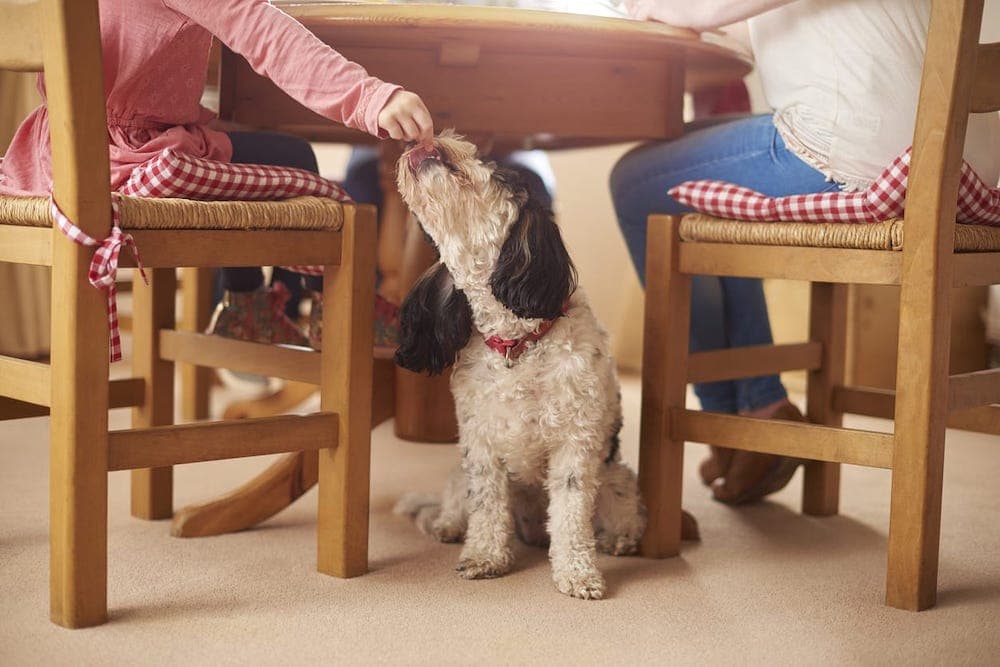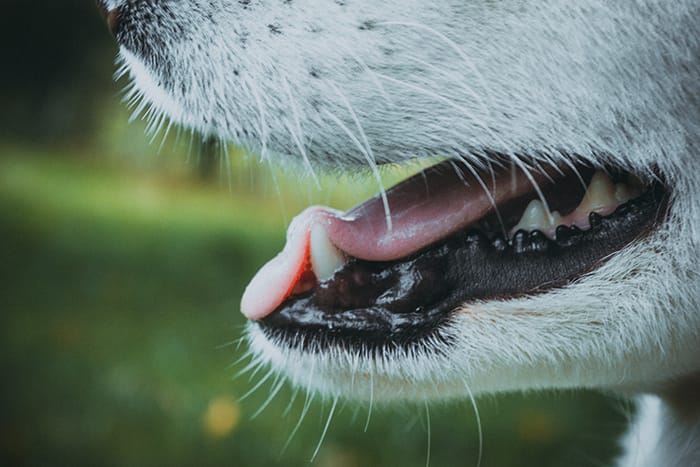Learn : Health & Wellness
A Dog's Share (of the Microbiome)
It might come as no surprise that your toilet-bowl drinking, dirt-loving canine best friend is covered in bacteria (a fact we choose to ignore when asking for slobbery kisses). Most of these bacteria—collectively called the microbiome—are beneficial and necessary to keep your pet healthy.
But you may be shocked to learn that they share some of these microbes with you—particularly the ones in their gut1. Or perhaps it’s not surprising: Pet parents share things like food, furniture, and cuddles with their dogs, so it makes sense that it might extend to the types of bacteria that inhabit their intestines.
Having pets has a number of benefits for pet parents, including lower stress and better fitness levels2. But researchers have also found that pets can have effects on other aspects of health. For instance, owning a dog can reduce the risk that children will have allergies3 or asthma4 later in life.
At least some of these effects appear to come down to changes in the microbiome. Our beloved companions seem to help our microbiomes become more diverse and keep us healthier. Some scientists think that our long-standing history with pets and livestock has interlaced our microbial health with theirs5.
Humans share microbiomes with their environment—and their pets
Microbes are everywhere6. Animal microbiomes are only part of the picture. Bacteria are not only in guts—they also live in mouths and on skin. They inhabit soil, water, and plants—everywhere in nature. Even your house has bacteria on light switches, door handles, and TV remotes. (Please try to resist the urge to grab bleach and scrub down your house!)
These microbes in your house don’t land there by chance. One study from 2014 found that we transfer them there6. Researchers looked at what types of bacteria they could find on various surfaces in homes and compared them to the microbiomes of the people who lived there. They discovered that the microbiomes of people living together were more similar than those who didn’t. And the home’s “microbiome” closely resembled that of its occupants. Bacteria growing on hands, noses, and feet (not our intestines) were most often found on surfaces.
Another study from 2013 revealed that family members share a microbiome not only with one another but also their dogs7. Dogs were more likely to have similar microbiomes to their owners than other people. People with dogs also had a higher likelihood of sharing skin microbes with their cohabitants than those without pets. This suggests that petting and hugging your dog might help you share your skin microbes with family members.
Scientists speculate that pets act as a conduit in the home, transferring microbes between people. But our shared history with dogs might also be responsible for similarities in human and dog gut microbiomes. A 2018 study found that the bacteria growing in the dog microbiome were more similar to those in humans than in mice or pigs1. This means that things important for human microbiomes might also be as important for dogs—and vice versa.
Sharing bacteria with our pets makes us healthier
It can be hard to say no to your dog when she wants a walk. This is part of the reason having a pet in your life makes you healthier—it gets you up off the couch and into the fresh air. Sharing bacteria with them is another.
Gut microbiome diversity is linked to many different diseases such as inflammatory bowel disease and obesity8. Recent research has begun to uncover links to other conditions such as allergies9. For example, exposure to furry pets at a young age—around 3 or 4 months—can significantly change the gut microbiome of infants10. Pets increased the abundance of Oscillospira and Ruminococcus bacteria in their gut, which may be protective against obesity.
A study from 2013 found that children with pets tended to have more diverse microbiomes, which could protect them from allergies later in life3. Another study published in the same year reported that exposure to dogs (but not cats) decreased infants’ risk of developing atopic dermatitis11—a condition that makes skin red and itchy.
Closing remarks
Having a pet certainly improves our lives in more ways than one. They help decrease feelings of loneliness and—if exposed at a young age—protect us from respiratory problems. The research discussed here primarily focuses on the benefits of having a dog, and more research is needed to investigate the advantages of having a cat for the microbiome. Regardless, next time you want to give your pet some love, do it for the good of your bacteria.
References
1. Coelho, L. P. et al. Similarity of the dog and human gut microbiomes in gene content and response to diet. Microbiome 6, 72 (2018).
2. About Pets & People | Healthy Pets, Healthy People | CDC. (2018). Available at: https://www.cdc.gov/healthypets/health-benefits/index.html. (Accessed: 5th December 2018)
3. Azad, M. B. et al. Infant gut microbiota and the hygiene hypothesis of allergic disease: impact of household pets and siblings on microbiota composition and diversity. Allergy Asthma Clin. Immunol. 9, 15 (2013).
4. Fall, T. et al. Early Exposure to Dogs and Farm Animals and the Risk of Childhood Asthma. JAMA Pediatr. 169, e153219 (2015).
5. Gupta, S. Microbiome: Puppy power. Nature 543, S48–S49 (2017).
6. Lax, S. et al. Longitudinal analysis of microbial interaction between humans and the indoor environment. Science 345, 1048–1052 (2014).
7. Song, S. J. et al. Cohabiting family members share microbiota with one another and with their dogs. Elife 2, e00458 (2013).
8. Barko, P. C., McMichael, M. A. & Swanson, K. S. The gastrointestinal microbiome: a review. Journal of veterinary (2018).
9. Lynch, S. V. Gut Microbiota and Allergic Disease. New Insights. Ann. Am. Thorac. Soc. 13 Suppl 1, S51–4 (2016).
10. Tun, H. M. et al. Exposure to household furry pets influences the gut microbiota of infant at 3-4 months following various birth scenarios. Microbiome 5, 40 (2017).
11. Pelucchi, C., Galeone, C., Bach, J.-F., La Vecchia, C. & Chatenoud, L. Pet exposure and risk of atopic dermatitis at the pediatric age: a meta-analysis of birth cohort studies. J. Allergy Clin. Immunol. 132, 616–622.e7 (2013).



 Microbiome And Its Relationship To Health
Microbiome And Its Relationship To Health
 Microbiome And Pet Health
Microbiome And Pet Health
 Microbes in the Gut
Microbes in the Gut
 Probiotics and Pet Health
Probiotics and Pet Health
 Microbiome in Nutrition
Microbiome in Nutrition
 The Microbes in Your Pet's Mouth
The Microbes in Your Pet's Mouth